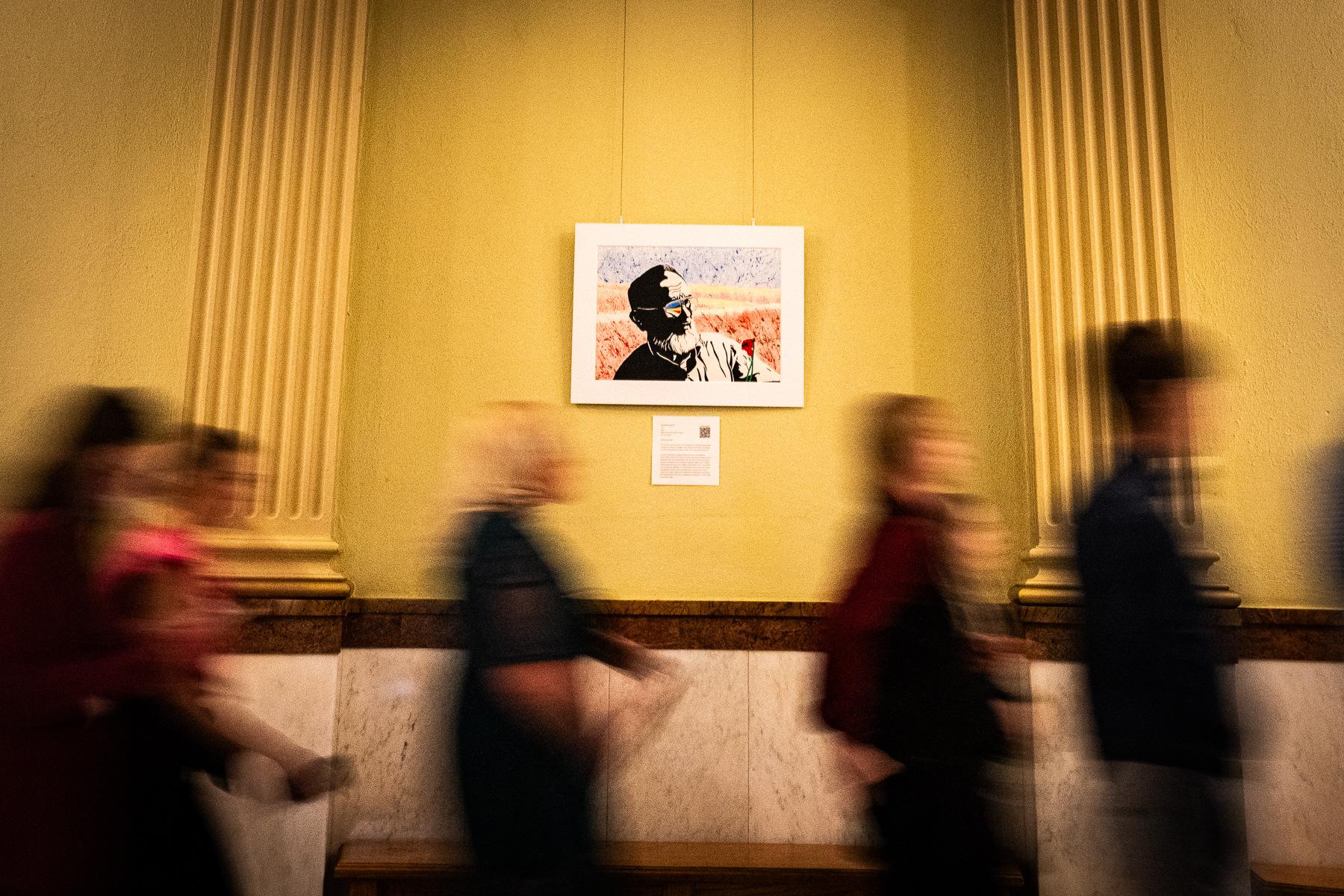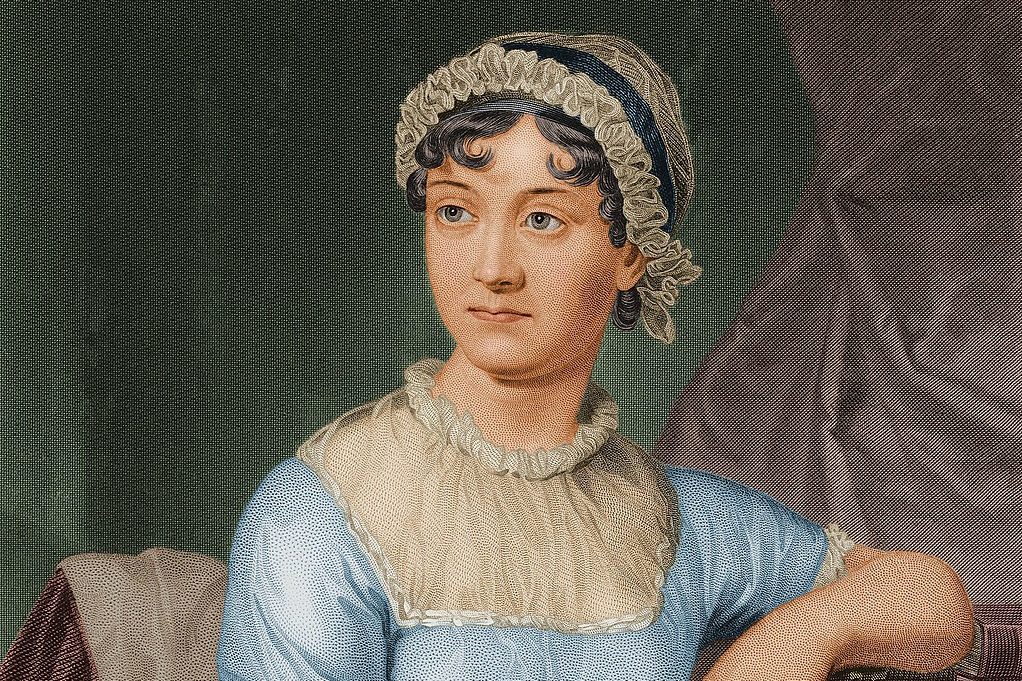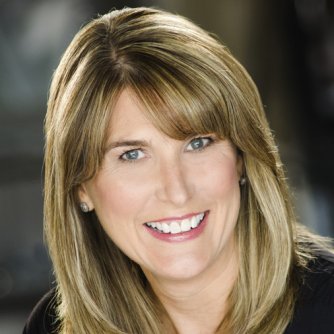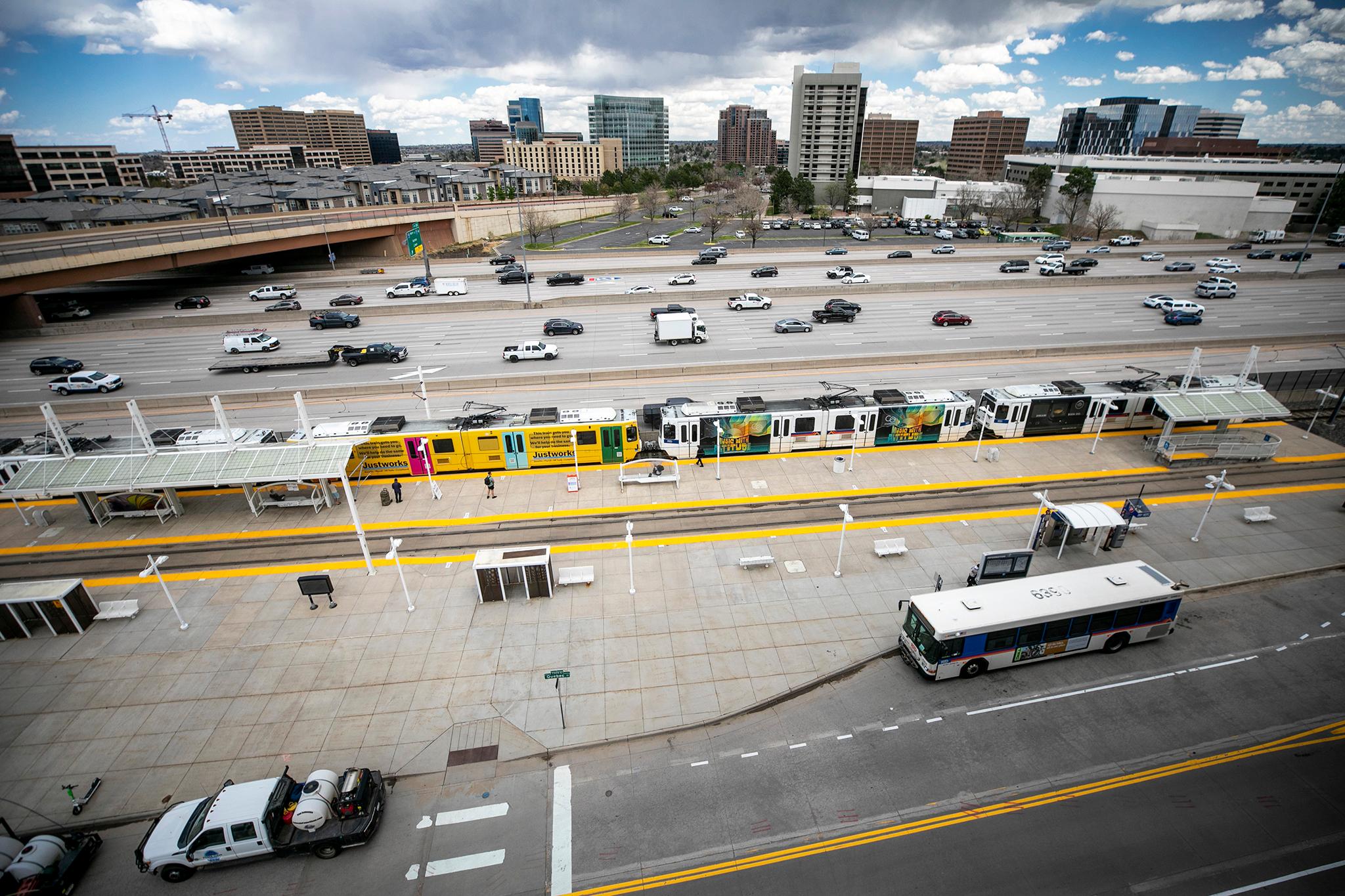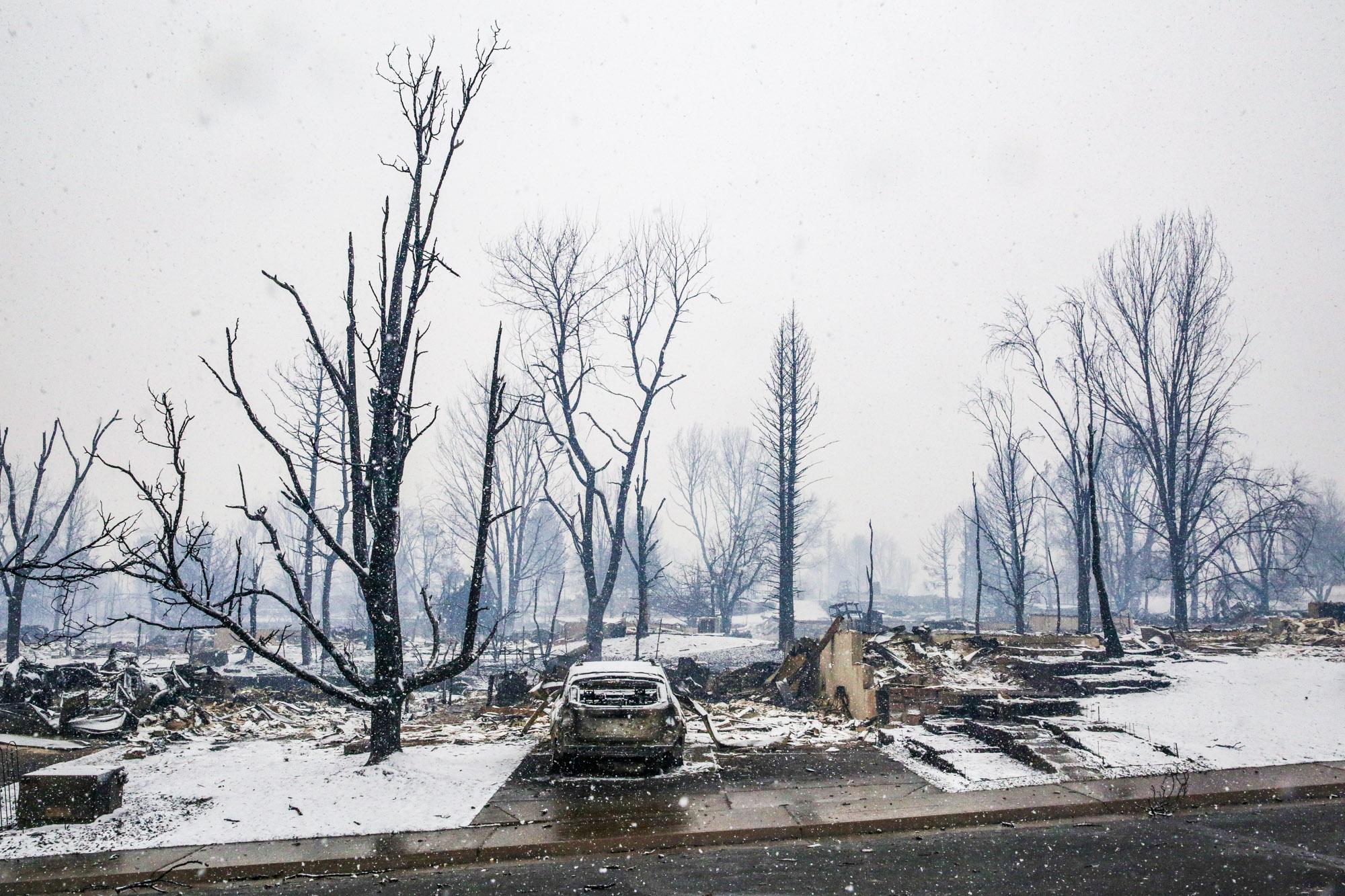
Climate change has made severe wildfires common in Colorado. Until recently, however, the most destructive disasters occurred in communities in or near forested areas. Meanwhile, people living in the Eastern Plains and foothills often worried the most about incoming smoke.
Not any more.
On Dec. 30, fast-moving grass fires ignited in Boulder County, creating an urban firestorm that destroyed nearly 1,000 homes, businesses and other buildings and forced tens of thousands to evacuate. The setting shocked many residents. The Marshall and Middle Fork fires rocketed across suburban grasslands, not communities in less populated woodlands further to the west. A Target and a hotel burned in the blaze.
Jennifer Balch, a fire scientist and the director of the Earth Lab at the University of Colorado Boulder, said the extent of the damage caught her off guard at first. Then she considered how climate change had driven record drought and high temperatures on the Front Range. In addition, she knew suburban development had brought a range of ignition sources into fire-prone grasslands.
“There’s a lot about this fire that wasn’t wild,” Balch said.
Balch’s sees the central role people played in the Boulder County fires as one reason for hope. If human decisions made the disaster more likely, changing those decisions could help prevent similar disasters from happening again.
Q: What did you make of the fires when they first started?
Balch: It hit me when I saw how big and dark the smoke was getting. Part of the reason why was the color of the smoke. Grass fires tend to have smoke that's a little bit lighter in color, so as soon as I saw the dark smoke, I knew there were structures that were burning. And I knew it was going to be bad under such high wind conditions because, in that scenario, there's really not much firefighters can do to put fires out.
Q: You study wildfire risk across different places and seasons. This was a suburban grass fire in the dead of winter. Is that something you feared or did it catch you by surprise?
Balch: I've been thinking about that a lot. There's a lot that was surprising about this fire. When I think a little bit harder about it, it wasn't surprising. We have a lot of homes that are sitting in flammable places. Our grasses burn, our shrubs burn, our trees burn. Colorado is a flammable place.
There were a couple of warning signs for me as a fire scientist. We had a six-acre fire on Dec. 23 on the Boulder Creek Path. Part of the reason is there's just been a lot of grass around because we had a really wet spring that grew up the fuels. And then we had a remarkable record warm and dry fall and winter. So as soon as I saw that fire happen, I was like, "Wow, we're at the end of December and we're seeing wildfires. This is not a good sign."
To get into that further, I’ll go back to the three main ingredients for fire. You need a warm conducive climate, you need an ignition source and you need fuel. We had all three of those because it's been so dry and our winter was so hot that our fuels, especially the light fuels, were just primed for burning. The wild factor was the wind conditions. We didn't need 100 mile-per-hour wind speeds. We probably would've seen a serious fire with under 50 mile-per-hour winds. But you throw wind on top of that and you get a really devastating event. So that's what we saw yesterday.
The other surprising thing for me as a fire scientist was the timing. Winter wildfires should be an oxymoron and we should not be seeing these types of events this late in the fire season. You could probably say right now we don't have a fire season anymore. We now have to be worried about wildfires year-round.
Q: Many people are wondering about the role of climate change in these fires. Do you see this as a climate-driven disaster?
Balch: I want to be crystal clear about this. Climate change is playing a role in this disaster — absolutely. It's not the only part of the story, but it's definitely part of the story. And again, this goes back to the three ingredients that you need for fire. You need a warm conducive climate, you need fuels to burn — and you need an ignition source.
The record warm temperatures we’ve had in Colorado definitely played a role in this. Our temperatures across the Front Range between June and December were the warmest on record going back to the early 1960s.
Climate change is essentially keeping our fuels drier longer. These grasses that we're burning during this event, they've been baked, essentially, all fall and all winter. And then, on top of that, we didn't get a lick of moisture.
- ‘What was important was life’: Marshall fire evacuee recalls losing his house, and being saved by the community
- PHOTOS: At a Lafayette shelter, anxious Marshall fire evacuees worry and await word on their homes and futures
- PHOTOS: The Marshall fire tore through this Louisville neighborhood
- PHOTOS: Aerial view of neighborhoods shows devastation in Boulder County
Q: One piece of the puzzle is the winds. High temperatures and drier weather are associated with climate change. What about the high winds?
Balch: No. And that's why I think it's really important to delineate what piece of the puzzle climate is influencing here. These were historic winds associated with Chinook wind conditions. We saw it with the East Troublesome fire. We saw it with the Calwood fire.
That's the factor that's unpredictable and, frankly, unlucky. Currently, research is being done on the link between wind conditions and climate change, but there's still a lot we need to figure out there.
Q: Before the fires, few people may have thought of Louisville and Superior as part of the Wildland Urban Interface. This is the area considered vulnerable to wildfires. Are more places than we thought part of this danger zone?
Balch: What we learned [during the Boulder County fires] is that the Wildland Urban Interface is actually bigger than we thought it was. The factor that played the biggest role there is wind. Essentially, those high wind conditions made the WUI bigger and opened the door for fire in ways that were unexpected.
That’s important to know because it can help us come up with solutions. Do we shut down power during high wind conditions to prevent these types of disastrous events and outcomes? Do we need to think about how we build and what structural materials we build with? There’s a lot we can do to build better, like rethinking asphalt roofs and wood shingles and wood siding. It's such an American way to want to build our way back and build better. Part of that equation has to be thinking about building with less-flammable materials.
Q: What else do you think could help reduce the risk of these kinds of disasters in the future?
Balch: Of all the pieces of the puzzle, in terms of a warming climate and changing fuels and ignition sources. Frankly, the ignition sources are the ones that we can most easily control. Power lines aren't the only ones that we need to be thinking about or worried about, but campfires or people driving off the side of the road in really tall grasses and hot exhaust tailpipes starting a wildfire.
There's a lot of awareness that also could help in terms of reducing the ignition sources. In the wintertime, there are no lightning-started fires in the middle of December and January. So 100 percent of the ignitions that are going to be happening in winter are going to be coming from people. And that's a piece of the puzzle that we can fix or reduce the potential for.
And then, frankly, we need to use more prescribed burning. That reduces fuel loads that are huge risks to neighborhoods. This is something that’s hard for people to wrap their heads around, but that’s where we need to be going as far as tools to fight future disastrous fires.
This interview has been edited for length and clarity.

